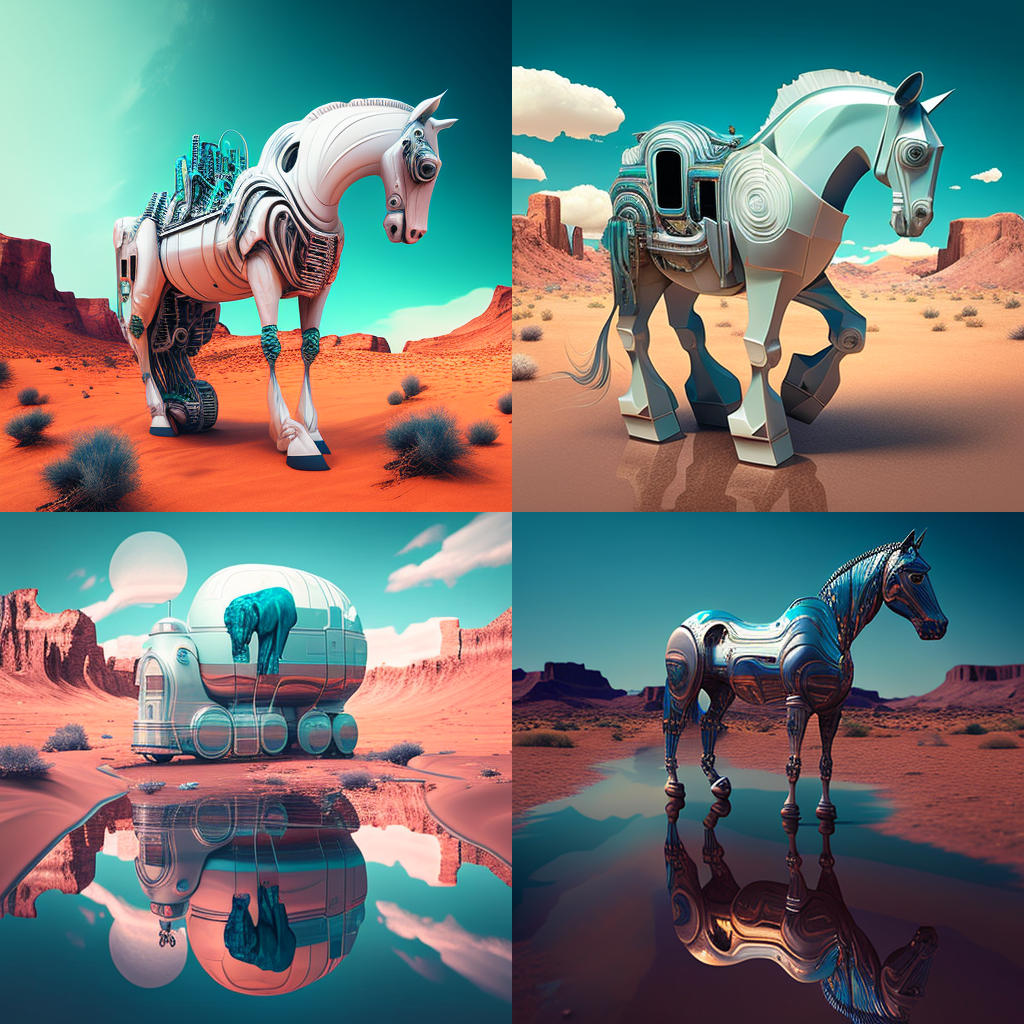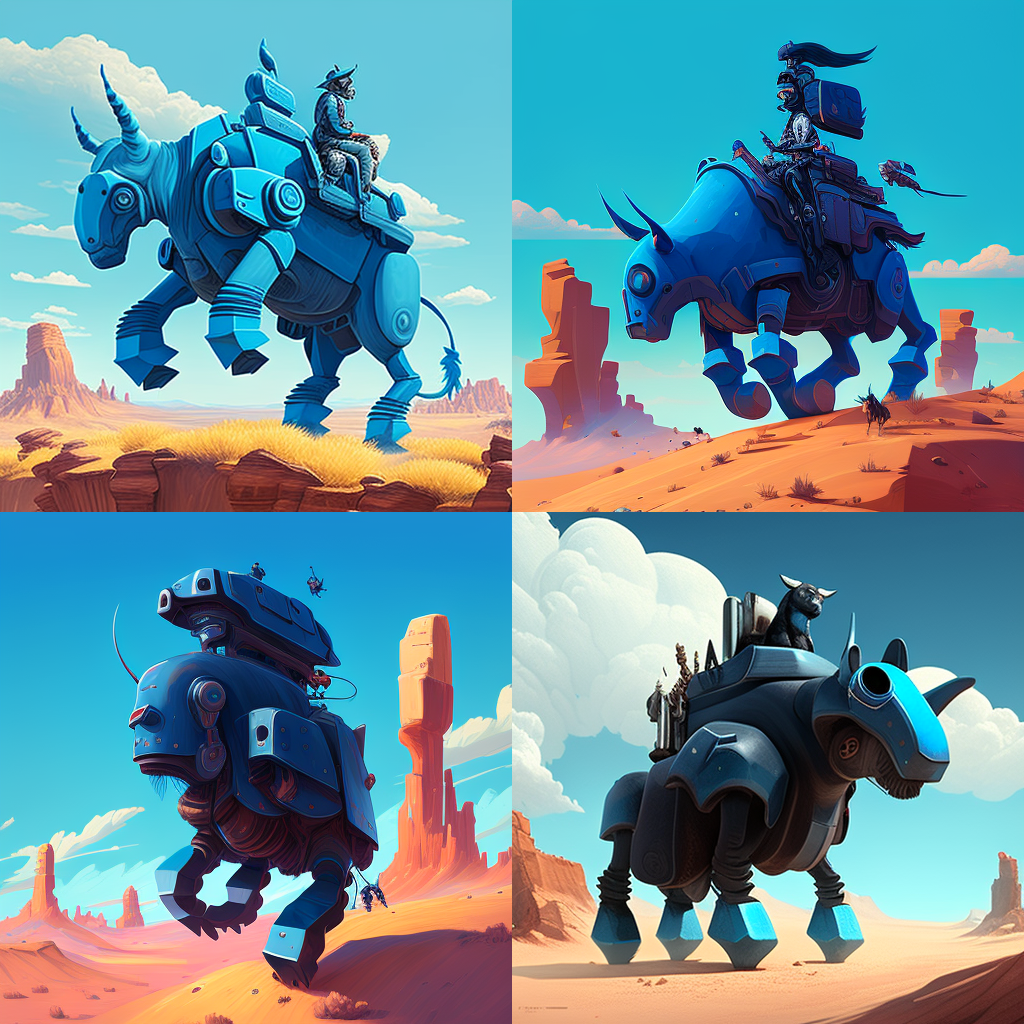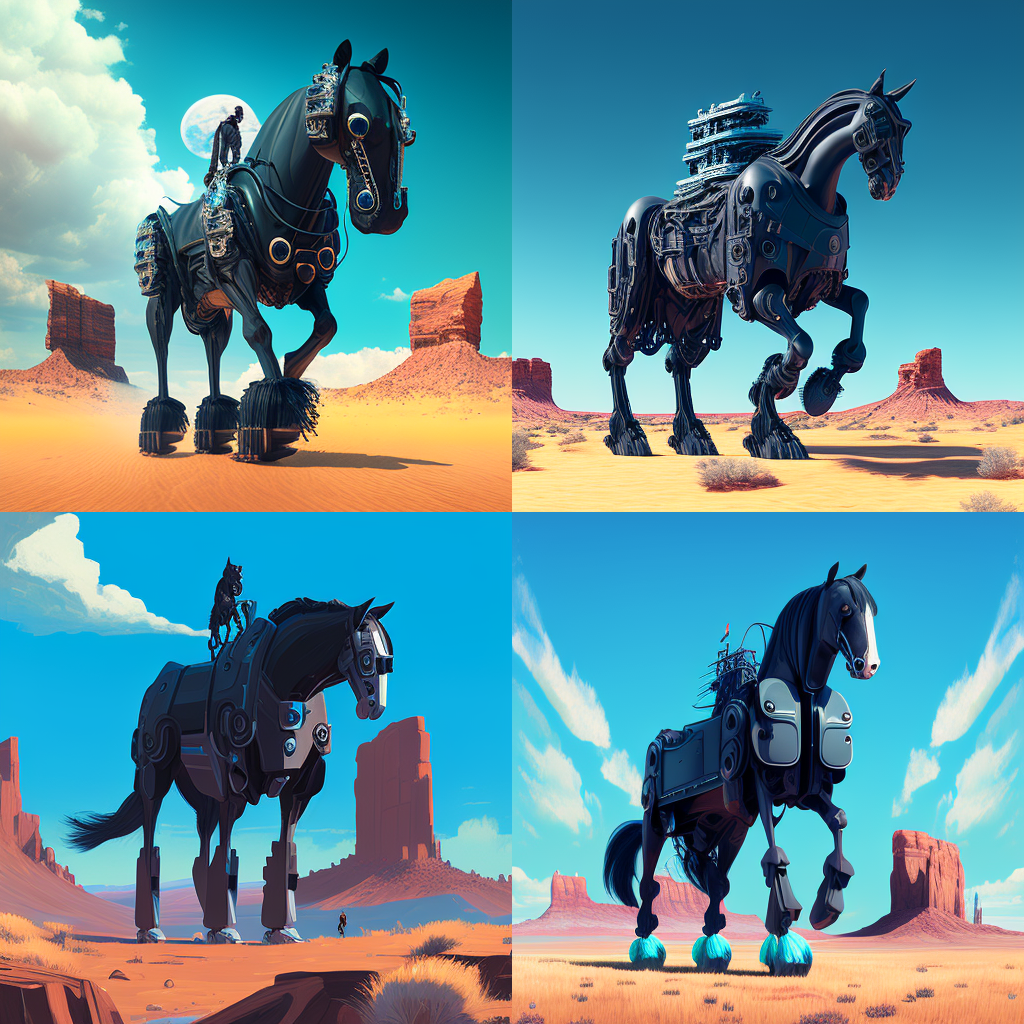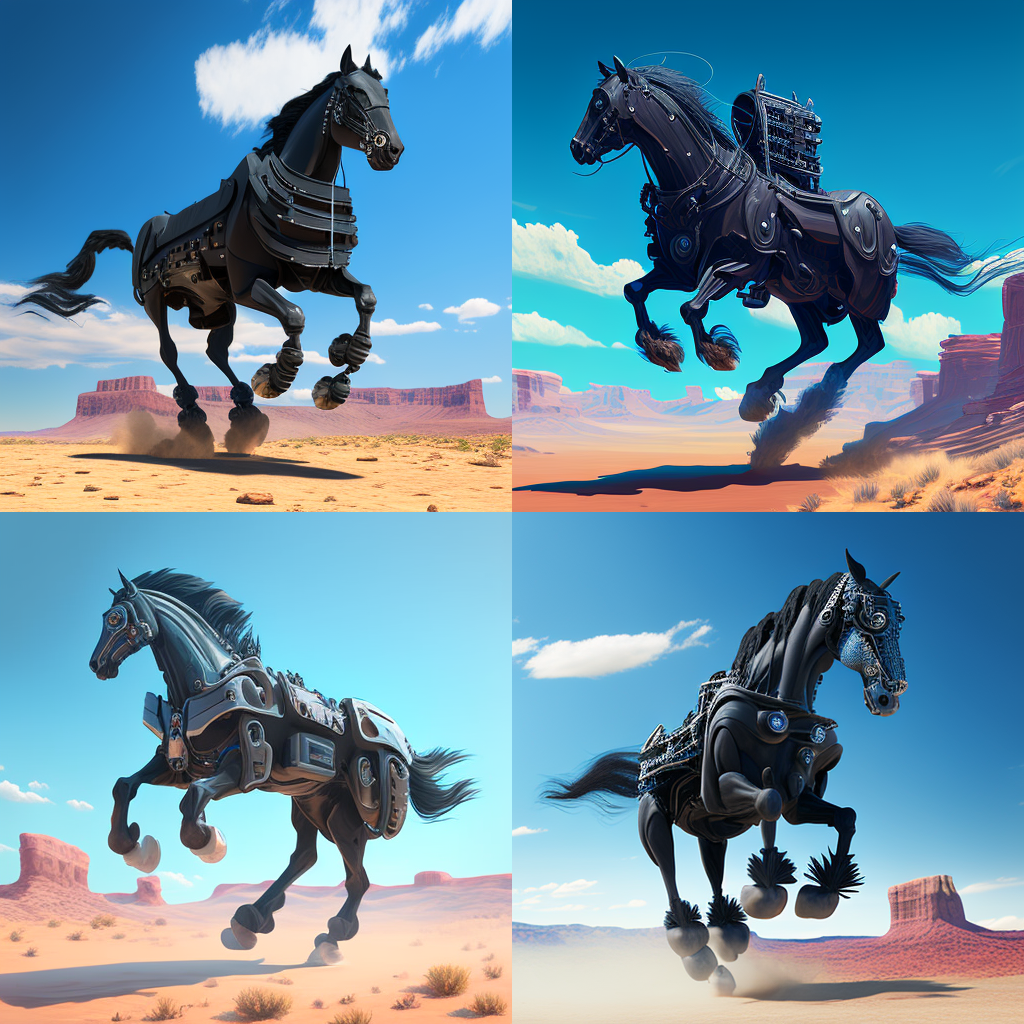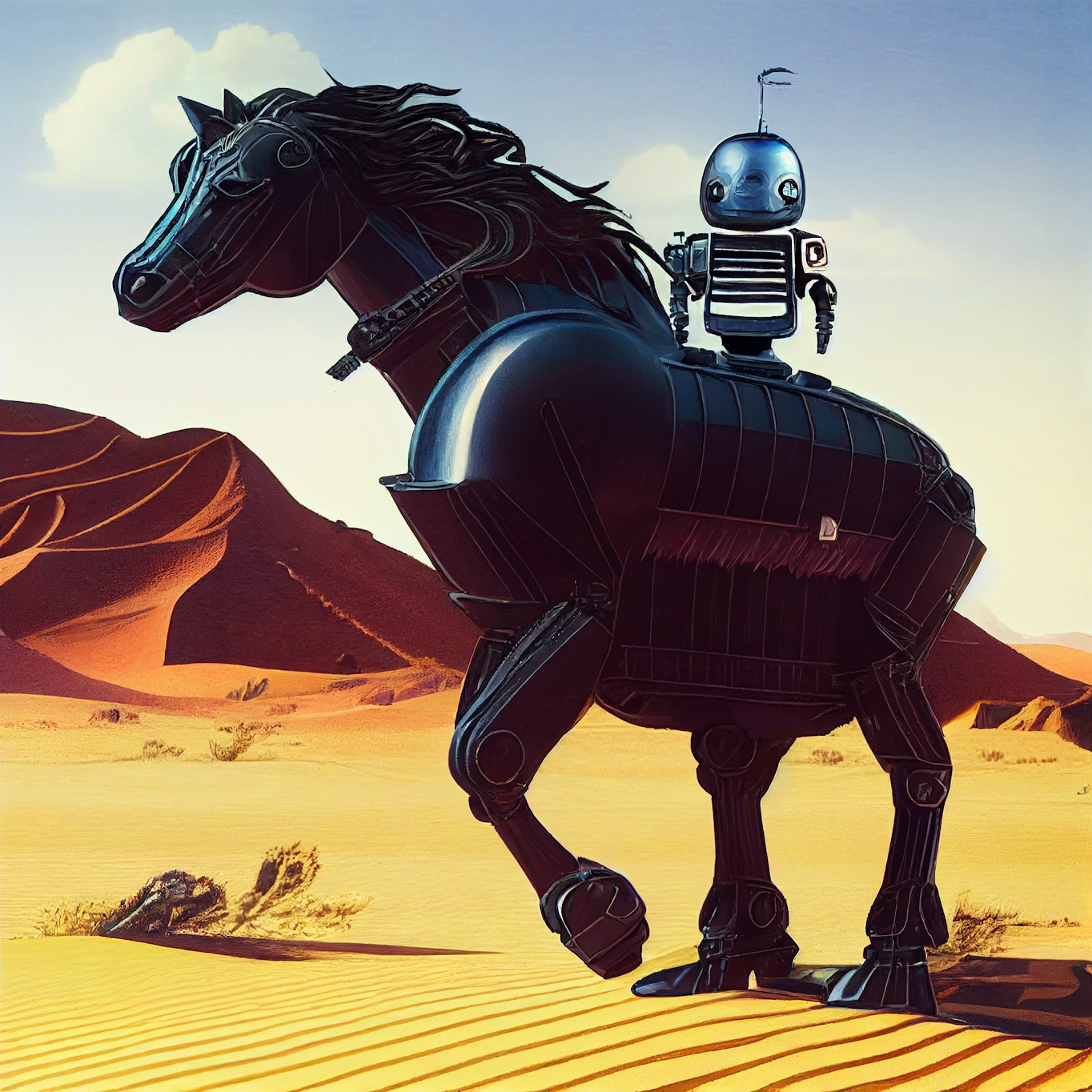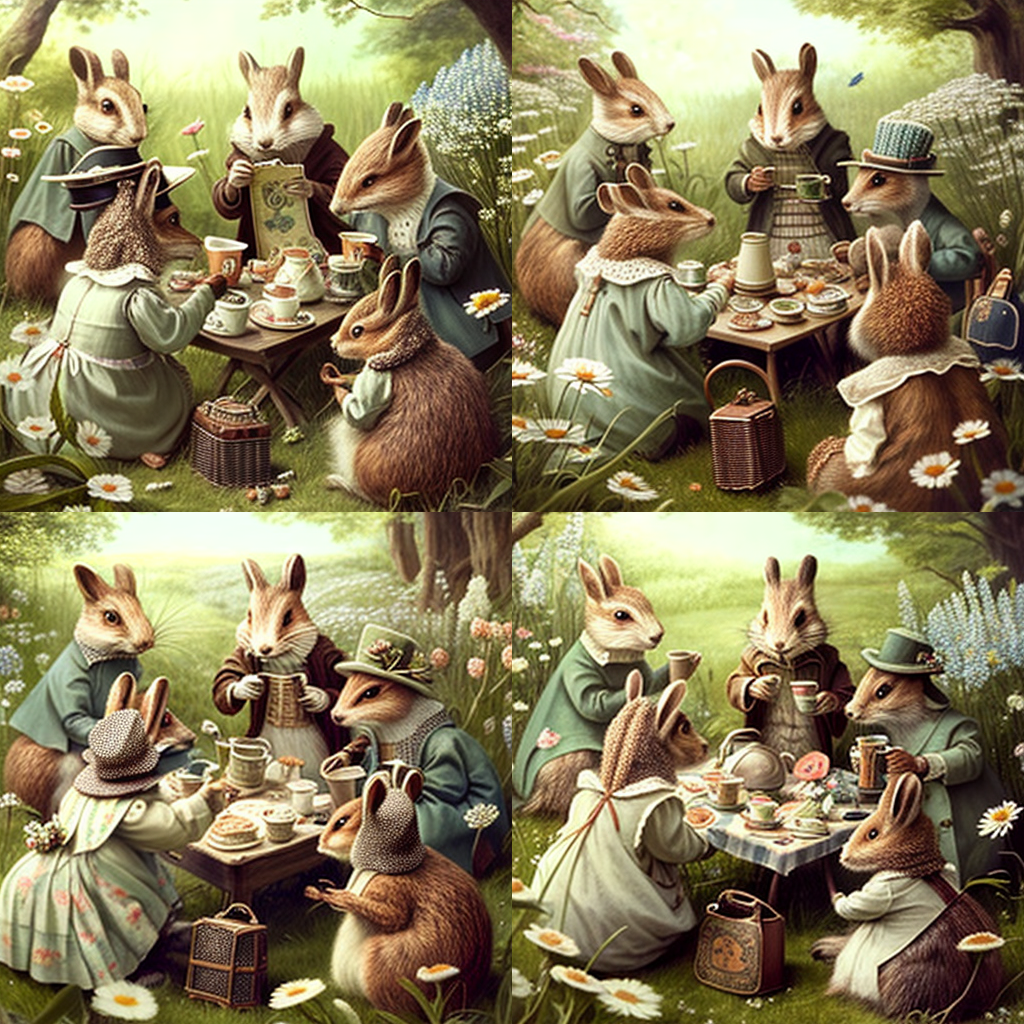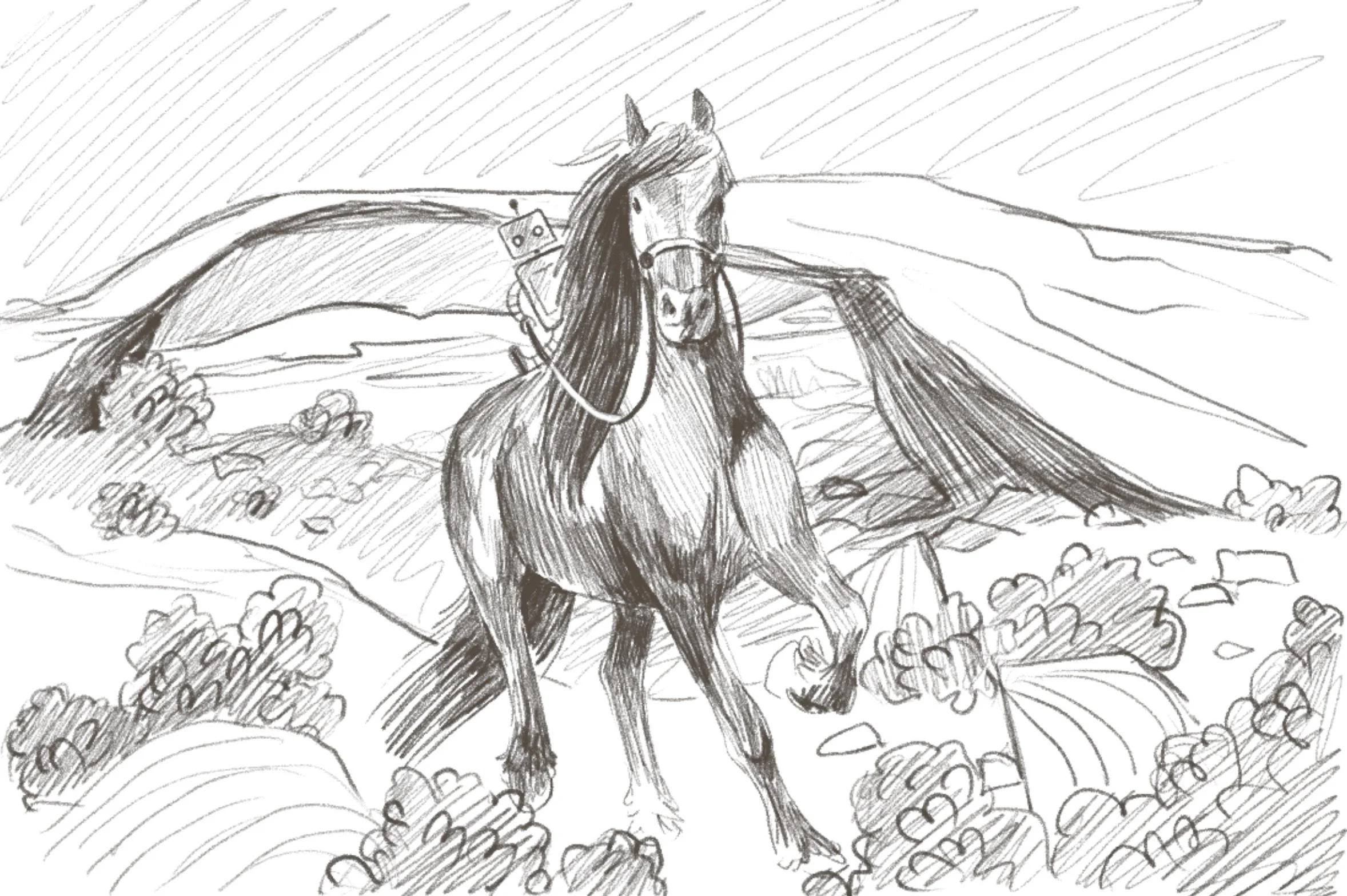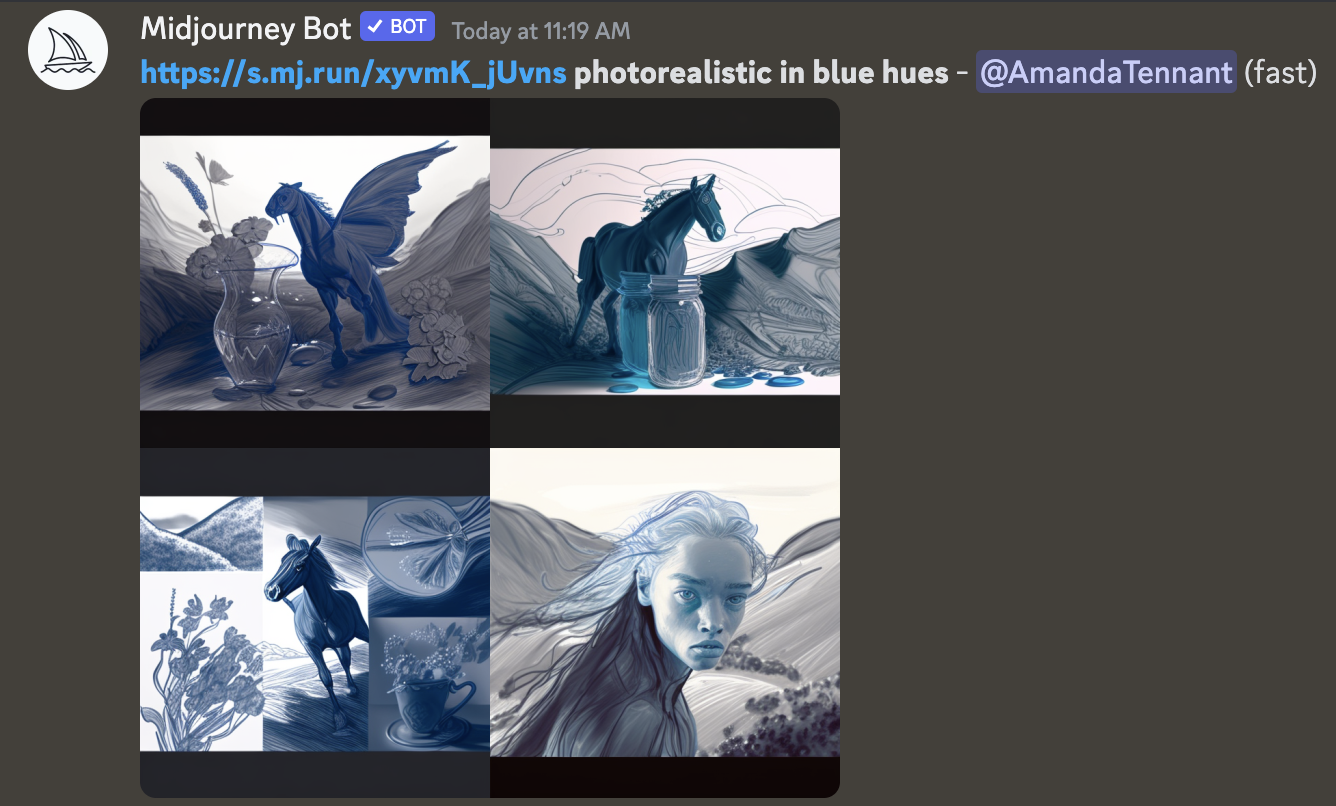Should You Use AI Art In Your Marketing?
Amanda Tennant & Carina Rampelt | May 4, 2023
Lensa. DALL·E 2. Midjourney AI. From your friends’ Insta feeds to ads on LinkedIn, AI art is taking over the internet.
Raise your hand if your team or clients have asked: “How can we take advantage of AI images?” The trend is very easy to spot right now. While AI art allows us to reference a wide range of artistic styles, we think that all the pieces share a common trait: They look flat and emotionless. Like something’s missing.
Sometimes literally. Like a limb. Or sometimes there’s something added that shouldn’t be. Like a woodland creature with three ears—a real result we got when we submitted a prompt to Midjourney AI.
Just think how acute these lagomorphs’ hearing must be. Three directions—trinaural audio!
A big reason is, AI doesn’t recognize what it’s creating. It can’t conjure a concept or emotion—it can only replicate what it has seen—er, scraped—elsewhere. That means, unless the human co-creator is incredibly thoughtful about the keywords and descriptions they put into the tool, and is incredibly diligent in checking the output, the final result can appear somewhat lifeless.
But AI tools aren’t going away anytime soon. So we posed ourselves the question: Is there a trick for collaborating with AI tools? Using a designer to play creative director, can we get AI to produce the kinds of images we want using just a written prompt?
Here’s what we’ve discovered.
The distorted elephant in the room: The eThical And Legal Implications OF AI Art
AI works by using an algorithm (aka a set of rules) and a data bank to solve a problem. In this case, the problem is generating a novel work of art based on a specific set of keywords.
But the AI tool doesn’t understand what it’s doing—it’s just trying to predict the next-best pixel based on the works in its data bank. As Kalyna Marketing founder Mariya Delano has written in her excellent article on AI writing, “It’s operating on correlation without any concept of meaning.” This means AI art walks an incredibly fine line between referencing existing work and copying it outright.
This leaves open several important legal and ethical questions: How can you be sure your AI art isn’t plagiarizing? Does ethical AI even exist? And who owns AI art anyway?
All art involves some amount of borrowing from what came before (we recommend Steal Like An Artist by Austin Kleon for more on this). It’s this act of remixing—bringing together old elements in new and surprising ways—that forms the bedrock of creativity.
But at this point in the technology’s development, it’s unclear if these tools have safeguards inside them to prevent plagiarism and there remains a real risk that the AI will replicate artwork without remixing it in a novel way. If a human works alongside the AI tool, they can make sure to inject originality as they play creative director—but it’s a bad idea to uncritically publish an AI image without having a designer finesse it first.
YOU CANNOT COPYRIGHT IMAGES MADE BY AI
The legal question is more sticky. Normally, a creator (or their employer) gains copyright over an original work the moment they create it. But as a brand, it’s important to understand that any images you create using AI do not belong to you. As of February 2023, the U.S. Copyright Office has ruled against granting copyright protection to works generated with an AI tool.
This means that anyone can take your AI-generated images and use them as they see fit. If they wanted to, your competitors could take your AI-generated images and use them in their own marketing and it would all be perfectly legal. So, be cautious before you decide to put an AI-generated image on a billboard or make it the center of an important campaign.
“If they wanted to, your competitors could take your AI-generated images and use them in their own marketing and it would all be perfectly legal.”
This is something to be especially wary of with Midjourney. While it’s one of the most sophisticated AI tools currently available, it also publishes public links to every image it generates—making these images even more vulnerable to being taken by others.
We don’t want these caveats to scare you away from trying the technology—we just think they’re important for you to be aware of before getting too deep into the tools. Because the tools are fun! It feels magical to be able to type words and be rewarded with an image. But use them with your eyes fully open to the potential risks.
What we’ve learned from FOUR months of experimenting with AI art
With that warning out of the way, we’d love to share what Fenwick’s design team has learned over the last few months of using AI art tools, in particular, Midjourney AI.
If you feel so inclined, we welcome you to open Midjourney as you read and try our prompts yourself. Compare your results with ours: Did the tool create something similar? Or did it take you in an entirely different artistic direction?
1. ONE OF AI’S BEST USES IS AS A VISUAL BRAINSTORMING COMPANION
Using an AI tool can be a great starting point for visual brainstorming and ideation. You can do this at the beginning of your ideation process, or if you get stuck somewhere along the way—after all, everyone gets blocked from time to time, and sometimes, a fresh infusion of inspiration is all you need to get the ideas flowing again. From these AI “sketches,” you can then move into Photoshop or Illustrator to keep finessing your idea.
We’ve found it incredibly helpful to use AI to play around with concepts until we hit on a direction we like. For instance, we recently experimented with feeding some of our company principles into Midjourney AI and were astonished by what it generated for us. Here’s what we inputted into the tool:
/image [ prompt ] style high-contrast surreal collage with no background. we love the journey toward excellence and all the gems of insight we discover along the way. We prioritize creativity, teach as a way of work life, and practice things, not until we get them right, but until we cannot get them wrong
And here are some of the options Midjourney created for us:
Using Midjourney provided a way for us to start ideating on how to present a very abstract concept in a highly visual way. We never would have thought about illustrating this principle using a staircase built out of books, but when we showed the concept to the team, everyone agreed it captured our Fenwick ethos.
While we won’t be moving forward with any of these AI-generated images as illustrations for our brand principles, they’ve provided a fruitful starting point for us to continue iterating on the concept. Turning to AI for inspiration, not a final product, also creates more space between the reference images AI is using and any potential output we publish—ensuring we avoid potential plagiarism and that the finished images are 100% our own.
2. AI ART TOOLS ARE STILL LIMITED
The AI tool isn’t a mind reader—and it’ll never be able to replicate exactly the image you have in your head (it’s still very much worth your while to have a trained designer on your team for that).
Even so, we were surprised about the surprisingly obvious things it managed to get wrong. It’s oft-repeated AI art advice that you need to be very specific in your prompt and go back to finesse it multiple times to be able to get the result you want. But we found that even with all that extra effort, we weren’t always successful.
For instance, we wanted to create an image of a little metal robot character riding a horse through the desert. The tool couldn’t seem to compute that we wanted to show a metal robot riding a flesh-and-blood equine mammal. It produced robot horses, knights riding robot horses—at one memorable moment, even a robot horse riding a robot horse.
Perhaps a good contender for a medieval reimagining of Mad Max, but not quite what we were looking for.
Here’s a sampling of the prompts we used and the results we ended up with:
/image [ prompt ] a silver-blue reflecting little robot with a single antenna riding a black horse through a Moab-like landscape:: all the colors should be neutral tones
/image [ prompt ] a blue robot character that is riding on the back of a black horse through a Moab- like landscape under a blue sky
/image [ prompt ] blue robot character riding on a Friesian horse through a Moab-like landscape under a blue sky
/image [ prompt ] a robot is riding on the back of a black Friesian horse through a Moab-like landscape under a blue sky
/image [ prompt ] a realistic black Friesian horse galloping has a robot riding on top of it through a Moab-like landscape under a blue sky
No matter how many attempts we made, we couldn’t manage to get the tool to create the image we wanted. The closest we managed to get was this monstrosity riding a robot horse.
Uh, you okay there, buddy?
It just goes to show: Once you type in a prompt, whatever the AI creates is ultimately out of your hands—and no amount of wordsmithing will be able to perfectly predict the results. In our experience, you can waste a massive amount of time and still not get the result you want.
3. ALWAYS DOUBLE-CHECK YOUR WORK
Human brains are great at filling in details that should be there, even if they aren’t (that’s why it can be so hard to proofread your own writing!). Many AI images look fine at first glance, but on closer inspection, can prove problematic.
Remember this image from above? We asked Midjourney to create a Beatrix Potter-esque tea party scene—if you look carefully you can see that, in addition to the extra ears, some of the woodland creatures’ hats are not sitting correctly on their heads, their paws look strange, or they’re holding a broken fragment of handle in one paw and the actual teacup in the other.
/image [ prompt ] A group of Beatrix Potter-esque woodland creatures (think squirrels, rabbits, foxes, badgers, etc.) having a tea party in a meadow of daisies in the springtime
Whenever you create an image with AI, it’s important to double-check: Are objects placed correctly in the scene? Does everyone shown have the correct number of limbs? Are there any missing body parts (or extra ones)?
If possible, it’s helpful to have someone who didn’t work on creating the AI image check it over—they’ll have fresh eyes and a better chance of picking up on any discrepancies.
Use AI to augment your designers’ creativity, not replace it
It bears repeating that AI art tools are still very much in their infancy. And while the technology can seem astonishing, the results are still quite unpredictable and inconsistent.
Our take? We love using AI art tools as a source of inspiration. It’s a great place to get started or to help you get unstuck. That said, AI is not a complete solution and you shouldn’t be using it as one. No matter how well you finesse your prompt, you don’t have control over the AI tool. Unlike becoming proficient with design tools such as Photoshop or Illustrator, with AI there’s no guarantee of creating the final image you want. Ultimately, you’re settling for what the tool gives you rather than believing in your own creative direction.
And while you can choose to keep struggling with the tool, we think there’s an easier way to get the images you want: We presented the robot-on-a-horse prompt we struggled so much with to our favorite human illustrator, Haven Peckover. Do you know how many attempts it took her to get it right?
Just one.
Haven: 1, Midjourney: 0.
That said, we’re not AI experts, and we’re open to being wrong. Here’s our challenge for you: We’ll revisit our stance on AI if you can manage to generate a satisfactory AI image of a robot riding a horse through the desert. If you do, please tag us on LinkedIn—and teach us your ways.
P.S. We even uploaded Haven’s sketch to Midjourney as a visual prompt and it still didn’t get it right. Sigh.
Want to keep in touch? We publish a twice-monthly newsletter about writing craft.




